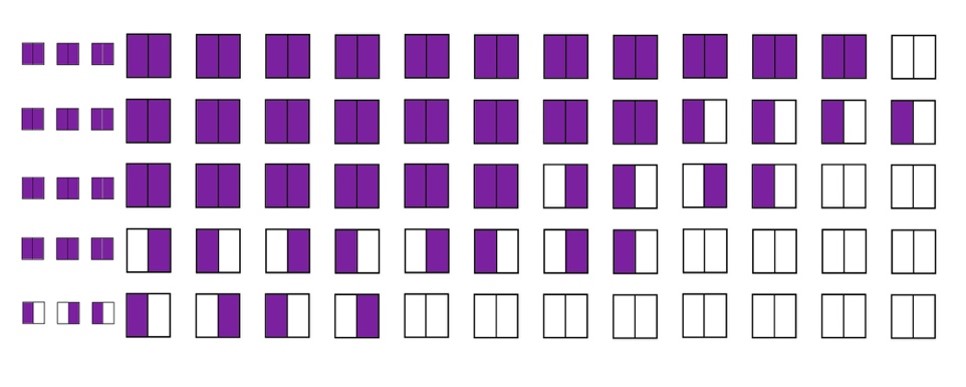
Gregor Mendel's answer (1867) to Fleming Jenkin (1860)
Yellow /
Green, Round / Wrinkled peas versus
White / Purple people
eaters
Fleming
Jenkin along with Charles Darwin and other
19th century biologists heredity that inheritance was a blending
process. Gregor Mendel showed instead that
inheritance is particulate.
Reconsider Jenkin's argument from blending inheritance with a
Mendelian particulate model. Suppose the White allele (W)
is genetically dominant to the recessive Purple allele
(w).
Line 1: A White sailor thrown up on the island of Purple
People Eaters is homozygous WW, and introduces two
W alleles into the populations. The PPEs are
all homozygous ww.
Line 2: Suppose again
that the sailor becomes King, and gains a two-fold
reproductive advantage over locals, who have two offspring
each. He has four offspring, all of whom are
heterozygous Ww, and
therefore
White. The number of Whites has quadrupled, and
the number of W alleles has doubled to four.
Line 3: In the next
generation, each of the white Ww
offspring again has a two-fold advantage, doubling the
number of W alleles to eight. Random assortment
produces a 1:2:1 genotypic ratio of WW, Ww, and ww offspring, thus
giving rise to two WW and four Ww white offspring, and
two purple ww offspring
(3:1 phenotypic ratio).
Line 4: The number of
W alleles doubles every generation, and the
proportion of WW and Ww
individuals increases indefinitely relative to ww
individuals.
Line 5: Eventually the
population approaches fixation for the W allele, as
predicted by Darwinian Natural Selection in combination
with Mendelian Genetics, as proved by the General
Selection Model
Mendelian particulate inheritance
ensures that the selective advantage of a genotype will
be perpetuated as an increase in the number of alleles in
that genotype in each generation. This in turn means that a new,
advantageous phenotype can come to predominate a
population. Recall that the disadvantageous recessive w allele cannot be totally
eliminated from the population. This disproves Jenkin's argument
from blending inheritance, that a new favorable trait
cannot expand in a population.
HOMEWORK:
Suppose W is semi-dominant OR recessive
to w: will the same results be obtained? Diagram
& prove your answer.
HOMEWORK: There is a bit of
trickery to move from Line 2 to 3. Identify it: does it
change the argument? How could you make the diagram more
realistic?
All text material © 2025 by Steven M. Carr